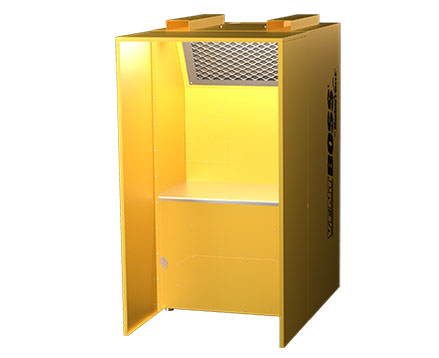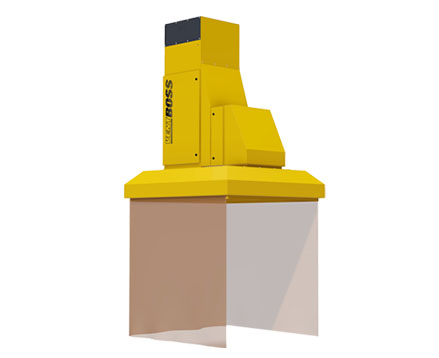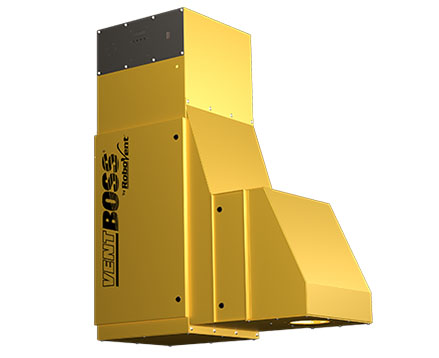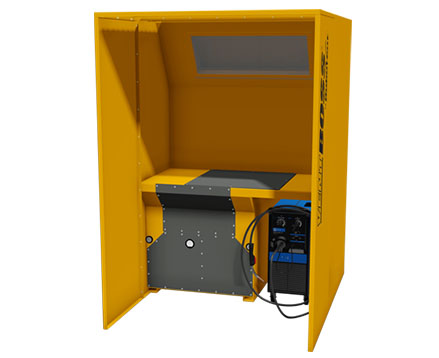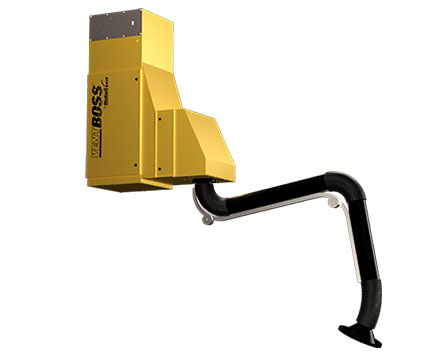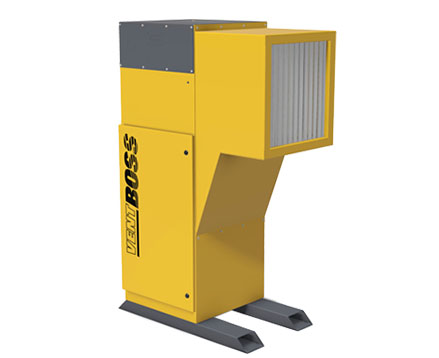WELDING BOOTHS
Manual welding workstations for safety and performance
Welding booths and tables provide a safe and efficient space for stationary manual welding of tabletop weldments. There are a lot of options when it comes to welding booths, including weld tables with built-in fume extraction and simple weld booths that can be hooked up to a centralized dust collection system or external collector. Whichever style of weld booth you choose, make sure weld fume extraction is a priority. We can help you choose the best weld fume extraction option for your welding booth or table.
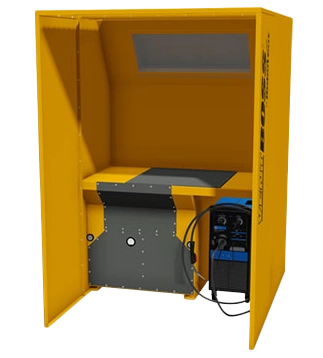
CHOOSING THE RIGHT WELD BOOTH
Welding booths are a great option for manual welding in fabrication shops, welding schools, maker spaces, automotive repair shops or anywhere else where welders are working on small tabletop parts. The right weld booth depends on your application, facility layout and welder requirements. Welding booths may come with or without integrated fume extraction.
- Welding booths with integrated fume extraction: All-in-one welding tables have filtration built right into the booth for an integrated solution. These workstations eliminate the need for an external dust collector and ductwork.
- External weld fume extraction options for weld booths: If the welding booth does not have an integrated filtration system, an external weld fume extraction system will be needed. This can be a centralized dust collector with multiple drops for an array of welding booths or stand-alone units positioned next to or mounted beside the welding booth. Fume arms and backdraft plenums are commonly used for weld fume control in welding booths.
See the full line of welding booth options from VentBoss.
WELDING BOOTH OPTIONS FROM ROBOVENT AND VENTBOSS
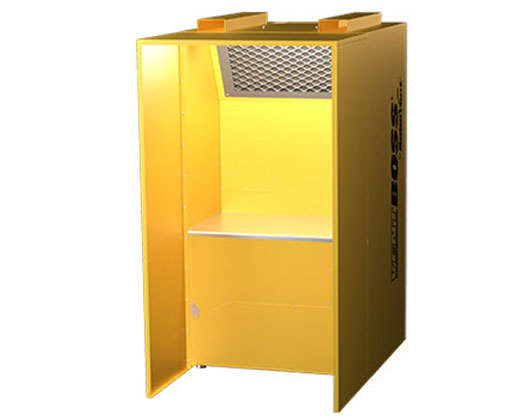 Want a welding booth with weld fume extraction built in? These all-in-one welding tables build powerful backdraft extraction into the unit for a fast, effective solution. Simple installation and plug-and-play operation make setup and operation a breeze.
Want a welding booth with weld fume extraction built in? These all-in-one welding tables build powerful backdraft extraction into the unit for a fast, effective solution. Simple installation and plug-and-play operation make setup and operation a breeze.
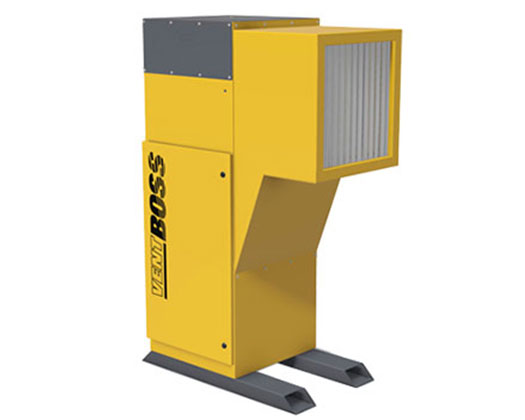 A floor-mounted backdraft plenum can be placed behind or beside the weld booth to pull dangerous fumes away from the welder. Simple plug-and-play operation with built-in filtration.
A floor-mounted backdraft plenum can be placed behind or beside the weld booth to pull dangerous fumes away from the welder. Simple plug-and-play operation with built-in filtration.
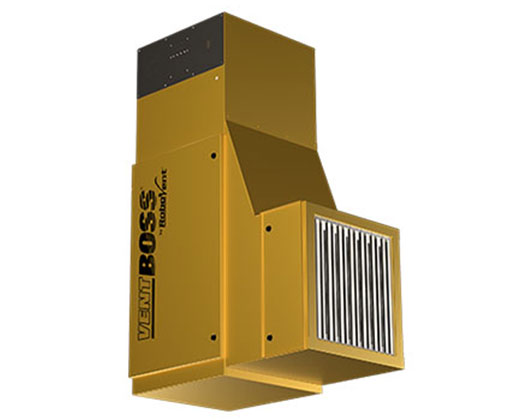 A wall- or ceiling-mount backdraft plenum pulls weld fumes up and away from the welder. Some styles are connected to a centralized dust collection system, while some incorporate their own filtration.
A wall- or ceiling-mount backdraft plenum pulls weld fumes up and away from the welder. Some styles are connected to a centralized dust collection system, while some incorporate their own filtration.
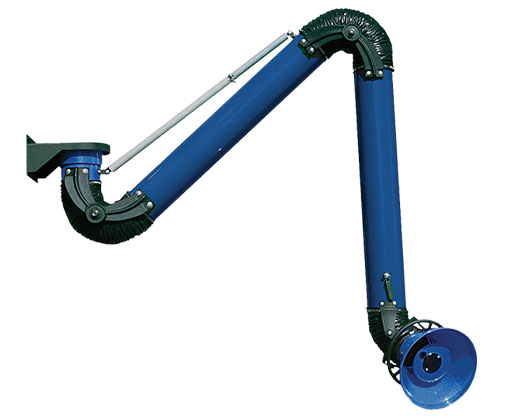 Fume extraction arms can be ducted to a centralized dust collection system or mounted to a portable, floor-mounted or wall/ceiling-mounted filtration unit. A welding booth with a fume arm is a versatile solution for manual welding.
Fume extraction arms can be ducted to a centralized dust collection system or mounted to a portable, floor-mounted or wall/ceiling-mounted filtration unit. A welding booth with a fume arm is a versatile solution for manual welding.
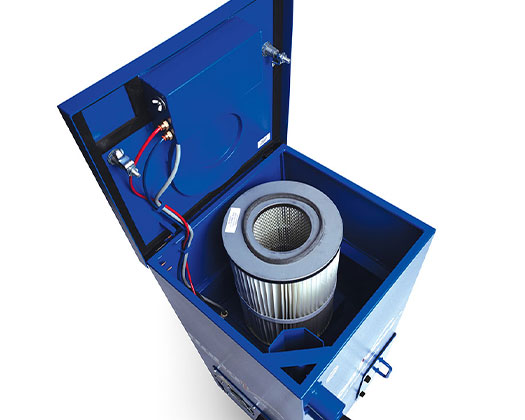 Portable weld fume collectors are a simple solution for welding booths—just set up beside your welding station and go! Portable collectors are often paired with fume arms for close capture of weld fumes in the booth. Or, pair a hi-vac extractor with a MIG fume gun in your manual welding booth.
Portable weld fume collectors are a simple solution for welding booths—just set up beside your welding station and go! Portable collectors are often paired with fume arms for close capture of weld fumes in the booth. Or, pair a hi-vac extractor with a MIG fume gun in your manual welding booth.
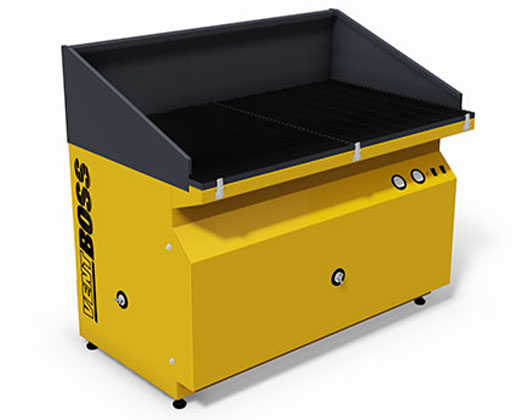 Downdraft tables have filtration built into the work surface. While sometimes used for welding booths, downdraft filtration may be better suited for grinding booths.
Downdraft tables have filtration built into the work surface. While sometimes used for welding booths, downdraft filtration may be better suited for grinding booths.
OUR MOST POPULAR WELDING BOOTH SOLUTIONS

FREQUENTLY ASKED QUESTIONS ABOUT WELDING FUME EXTRACTORS
Welding Booths
What should I look for when choosing a weld booth?
There are several considerations when choosing a welding booth for your operations.
- Fume extraction: One of the most important considerations when choosing a welding booth or table is the fume extraction method. All manual welding requires some form of fume extraction. This can be built into the weld booth or table (e.g., via a backdraft plenum or fume arm connected to an integrated filter chamber). Alternatively, a simple welding booth or table can be used with another form of weld fume extraction, such as a backdraft plenum or fume arm hooked up to a centralized dust collector or individual collector.
- Booth size and design: Welding booths come in different sizes and designs. Make sure the welding surface is made of durable materials (such as heavy-duty steel) and large enough to accommodate the largest size part your welders will work on.
- Portability: Need a portable welding booth? For added flexibility, consider booths that are easy to move or reposition.
- Added features: Some welding booths come with added features, such as built-in lighting, storage space and power for the welder, spark control, or curtains. Consider which features are important to you and your welders.
What kind of weld fume extraction is used for a welding booth?
There are several types of manual welding fume extraction methods that can be used with a welding booth.
- Backdraft plenum: A backdraft plenum provides effective continuous fume extraction for tabletop weldments. The plenum may be integrated into the welding booth or ducted to a centralized dust collection system. Backdraft plenums pull fumes up and away from the welder’s face to keep the breathing zone clear. Since they do not require manual repositioning, they are simple for welders to use.
- Fume arm: Fume arms are flexible, articulating arms with close-capture extraction hoods that can be positioned near the welding source to capture fumes. Fume arms may provide an advantage when working with highly toxic materials, since the capture hood can be positioned right over the weld seam for more efficient fume capture. They also require less airflow (CFM) than a backdraft plenum, providing energy savings. However, the welder must reposition the arm during welding of larger pieces to ensure that the capture hood is directly over the weld seam. Fume arms may be ducted to a centralized dust collection system, integrated into a welding booth or connected to a small portable fume extractor.
- Fume guns: For welding booths without integrated fume extraction, fume guns provide an effective fume collection option for manual MIG welding. Fume guns use a tip extraction system for on-torch weld fume control. When used correctly, they can collect up to 90-95% of weld fume right at the source. Since fume extraction is built into the torch, welders don’t need to worry about repositioning.
- Overhead hood systems: Sometimes, an overhead hood system is used to collect weld fume as it rises. The receiving hood is usually ducted to a centralized dust collection system. Like a backdraft plenum, this provides the advantage of not requiring the welder to reposition anything during welding. These systems are sometimes used for larger welding booths or areas where multiple welders work on large assemblies. However, depending on the type of welding and position of the welders, an overhead receiving hood may not do a good job of keeping weld fumes out of the breathing zone. For heavy weld fumes or highly toxic materials, a close capture system (e.g., fume arm) or a backdraft plenum, which pulls fumes away from the welder, is usually a better choice.
- Downdraft tables: Downdraft tables or benches are sometimes used as welding booths. Downdraft filtration systems are usually integrated with the workstation for a stand-alone solution. They work similarly to a backdraft plenum but use downward airflow instead of pulling fumes up and away horizontally. For this reason, they are not always an effective method for submicron fumes created by welding and other thermal processes, which naturally rise as they are created. A backdraft plenum is usually preferred over downdraft for a welding booth. Downdraft tables may also present a fire risk when used for welding.
Do I need a weld booth with integrated fume extraction?
Welding booths come either with or without integrated fume extraction.
- Welding booths or tables with integrated fume extraction can be a convenient option for many operations. By combining a stand-alone welding worksurface with built-in fume extraction, these booths eliminate the need for a separate dust collection system and expensive ductwork. This makes them simple to set up, easy to use and highly versatile for smaller shops needing just a few welding stations.
- For larger welding operations with many manual welding stations and a fixed facility layout, it may make more sense to have a centralized dust collection system with a drop to each welding station or booth. A centralized system provides economies of scale for larger operations and simplifies maintenance, since there is only one industrial dust collector to maintain.
- If you are using fume guns for manual MIG welding, you will not need a built-in fume extraction system. The fume guns are connected to a high-vac fume extraction system to remove weld fumes at the source.
Whichever type of welding booth you choose, make sure you have a fume extraction plan in place for your welding booths to ensure welder safety and compliance with OSHA regulations for weld fumes.
Where are welding booths used?
Welding booths are widely used in a number of industries and applications, particularly those that involve stationary manual welding of small to medium-sized parts suitable for placement on a table. Places that commonly use welding booths and tables, with or without integrated weld fume extraction, include industrial fabrication shops, weld schools and technical colleges, automotive workshops and repair centers, maker spaces and art studios, and in-house maintenance and repair shops.
Why use a weld booth?
Weld booths combine convenience, safety and performance for manual welding. They provide a designated area for welding with an appropriate worksurface for placement of small to medium-sized parts. A semi-enclosed weld booth also acts as a safety barrier, protecting both the welder and the surrounding work environment from potential hazards such as weld fume, sparks and spatter. Many weld booths also come with integrated lighting, storage space for the welder and consumables, and other features that enhance welder productivity and comfort. With a dedicated space for manual welding, welders can focus better on their task, leading to more efficient welding operations.


